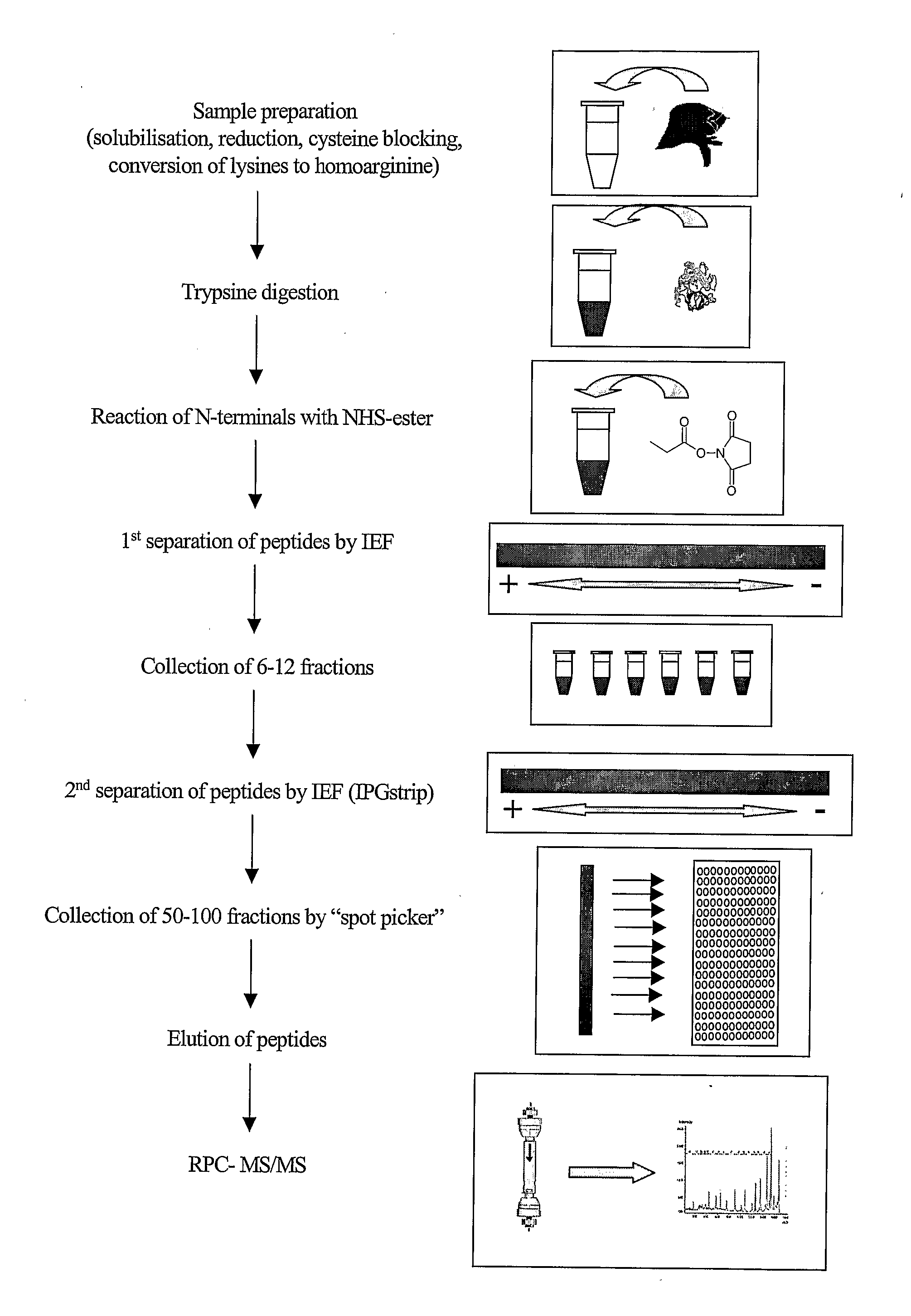Method and Kit for Peptide Analysis
a peptide and kit technology, applied in the field of proteomics, can solve the problems of large parts of generated data in a data set that are often redundant, and limit the possibility of making relative concentration determinations for low abundant peptides/proteins,
- Summary
- Abstract
- Description
- Claims
- Application Information
AI Technical Summary
Benefits of technology
Problems solved by technology
Method used
Image
Examples
Embodiment Construction
[0077]In the method of the invention several different reagents may be used for mass tagging at the N-terminal. Examples of useful mass tagging reagents are: N-acetoxysuccinimide, N-propoxysuccinimide, propionic anhydride, formaldehyde, or other aldehydes, for generation of dimethyl derivative by reductive amination. For differential tagging the light reagents contain the normal isotopes and the heavy reagents are substituted with deuterium (Dn) or are alternatively substituted with 13Cn, wherein n is a number from 1-4 depending on the chosen reagent.
[0078]One way to balance the N-terminal mass caused by the mass tag is to use trypsin to include 16O and 18O at the C-terminal either in connection with the tryptic digestion [8] or at a later stage where then trypsin is included together with mass tagged sample peptides in a 1 / 1 mixture of H216O / H218O to catalyse the 16O / 18O exchange.
[0079]Other ways of N-terminal tagging are reactions at N-terminal lysines or conversion of lysine to h...
PUM
 Login to View More
Login to View More Abstract
Description
Claims
Application Information
 Login to View More
Login to View More - R&D
- Intellectual Property
- Life Sciences
- Materials
- Tech Scout
- Unparalleled Data Quality
- Higher Quality Content
- 60% Fewer Hallucinations
Browse by: Latest US Patents, China's latest patents, Technical Efficacy Thesaurus, Application Domain, Technology Topic, Popular Technical Reports.
© 2025 PatSnap. All rights reserved.Legal|Privacy policy|Modern Slavery Act Transparency Statement|Sitemap|About US| Contact US: help@patsnap.com


